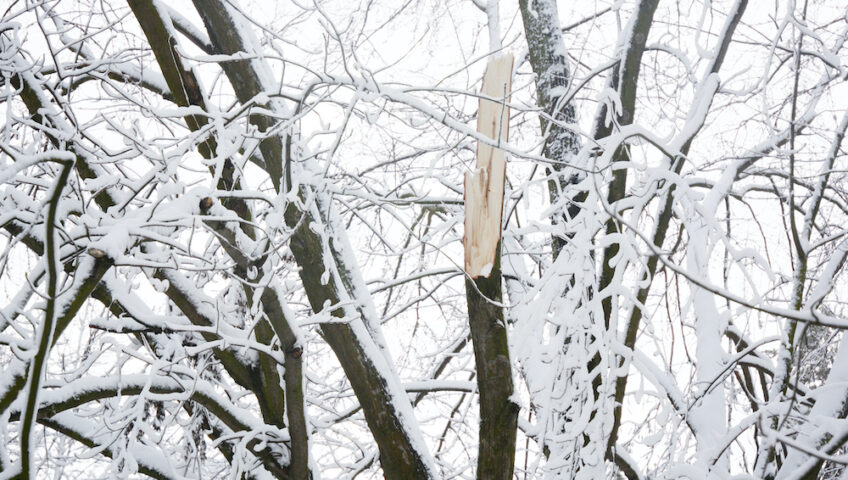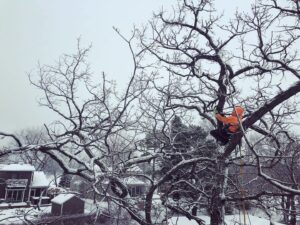For trees in Minnesota, winter is one of the biggest obstacles to survival. Heavy snowstorms, intense cold, ice accumulation, the freeze-thaw cycle and even road salt in the soil can all cause tree damage during winter. When your trees sustain winter damage, you may need to take action to keep the tree alive. Here are the telltale signs of winter tree damage and what you can do to help your trees survive and recover.
Signs of Winter Tree Damage & How to Fix It
During the winter in Minnesota, several different factors can cause tree damage. It’s important to be able to recognize this damage in order to help your tree recover. Common signs of winter tree damage include:
- Broken or fallen branches. This is the most obvious sign of winter tree damage in Minnesota, caused when too much snow or ice builds up on a tree limb. Winter windstorms can also snap branches off. When you find branches that have snapped but not broken off entirely, it’s best to prune these limbs. Not only can dangling branches pose a safety hazard, this type of damage leaves trees vulnerable to pests and disease in spring. Pruning the broken branches in winter will give your trees a chance to recover before these dormant threats emerge.
- Cracks stretching over the trunks or branches of trees. This winter damage is caused by the freeze-thaw cycle that occurs during shifts in temperature. Unfortunately there’s no way to heal these frost cracks but you can prevent more of them from occurring. If you find cracking on your tree trunk during winter, use tree wrap to insulate your tree against the elements. This will both shield your tree from further frost cracking and give your tree a chance to heal before spring.
- Browning foliage and dying roots on trees, both of which result from a lack of soil nutrients. Extreme cold that freezes the ground and road salt getting into the soil are both common culprits of this winter tree damage in Minnesota. If salt is the cause of the root damage, it’s important to wash out your soil as soon as the ground thaws to prevent ongoing salt burn to your trees. You should also make sure to water affected trees regularly in early spring and apply fertilizer to help them recover from this winter damage.
Professional Solutions to Winter Tree Damage
If your trees have sustained extensive damage during the winter and you’re not sure how to fix it, your safest option is to refer the issue to a tree care professional. Contact Pro-Tree Outdoor Services today if you need tree pruning, tree care or other tree services for your property in the greater Twin Cities area!



Write a Comment